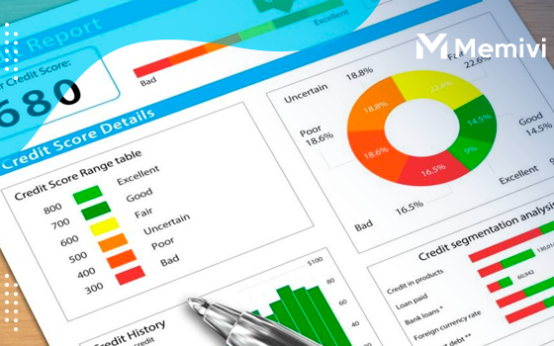
Credit is part of any person’s financial life. It can be used to help people buy items they need, when they do not have the money to do so outright, or to help people borrow money to buy different things. In order to take credit, a person needs to have a credit card. However, not all credit cards are the same. There are some that charge much more than other cards and are more difficult to obtain. With that said, person should learn about the different credit cards that are offered and choose the one that is best for them.
Moreover, credit is a basic financial tool that is used by almost everyone. It is possible to live without credit, but that would require a lot of hard work. Credit is built on trust, and it is what it is because if you have to trust someone before they can trust you with their money, then trust will be built into your financial life.
What is Credit Utilization Ratio?
The credit utilization ratio is a calculation that measures the amount of available credit that a company or person uses against total credit. The ratio is the amount of available credit divided by the total amount of credit the company or person has borrowed. This ratio can be used to determine the potential risk of the company or person if they continue to borrow and use the available credit. The higher the ratio, the higher the risk.
Furthermore, credit utilization ratio is a number to show how much of your available credit is being used. This can be of great importance to a person and can give a person insight into how well they’re managing their finances.
When credit utilization is too high, it can be indicative of a spending problem. This ratio is most important for those who are using credit for their primary source of income. It is also important for those who have just hit their credit limit to stop spending because it can be a potential risk to their credit scores.
How to calculate your credit utilization ratio?
To calculate your credit utilization ratio, add up all the revolving credit you have or the total unpaid balances on all the credit cards you have available. After you have the number, divide the sum by all the credit limits you have. Once done, multiple the number by 100 so you can get a credit utilization percentage.
A great example would be:
$30,000 as an outstanding balance
$100,000 as a total credit limit
($30,000 ÷ $100,000 x 100), which then gives you a 30$ credit utilization ratio.
Generally, it’s a wise idea to keep your credit utilization ratio below 30%. This is because the primary credit management tool that lenders use to assess credit risk. The utilization ratio has a wide range of uses in credit scoring, loan pricing, and other credit-related decisions.
The Ideal Credit Utilization Ratio
Proper credit utilization is an important metric to measure your credit card’s performance. This metric is how much of your credit card’s limit you have used at any given time. The ideal credit utilization ratio is 30% as a benchmark. This means that at any given time, a total of 30% of your credit card’s limit has been used – which is a good thing for your credit score and history.
How to Keep Your Credit Utilization Low?
If you’re looking for ways to keep your credit utilization low, you might just be able to start with a budget overhaul. If you want to build credit down the road, you’ll want to avoid any high-interest loans, like payday lending, that can lead to high debt payments. You can also do these 5 things below to make sure that you stay on a low credit utilization:
- Pay all your credit purchases on the same day
Keeping your credit utilization low is a good idea in general. In fact, a low utilization of your credit will keep your credit score healthy and your debt-to-income ratio low. In order to keep your credit utilization low, try to pay all of your credit purchases on the same day. This will prevent you from incurring interest charges and late fees which then adds up to a bad credit history.
- Create multiple payments in the same month
When you have a high credit utilization, you are using up a lot of your available credit. This can lead to increased interest rates, which can cost you a lot of money. To avoid this, consider making multiple payments in the same month. So instead of one large bill, you have smaller bills that are spread out throughout the month. This will not only help you, but also your credit score.
- Ask for an increased credit card limit
Even though they are taking steps to pay down debt, they may still have a high credit utilization. This can be especially true for those who have maxed out their credit cards. If you’re in this situation, it is possible to boost your credit score with one simple move. The best way to keep your credit utilization low is to ask for an increased credit limit on your cards.
You can use this to put more money on this card to make it easier to pay off, or you can use it to split your spending over two cards. One card is for your daily spending and the other is for long-term savings.
- Have multiple credit cards
By keeping your credit utilization low, you can have a credit history that is less likely to be a negative factor in the future. With that, you need to have multiple credit cards to spread out the debt. That way, you won’t be charged a high interest rate. It’s a way to lower your debt and keep your credit score up. Moreover, y u can use the cash back feature, which allows you to use less than your credit limit. You can also use a different credit card designated for day-to-day expenses or other categories you need with your lifestyle.
- Keep your credit accounts open
It’s a myth that having too many credit accounts will hurt your credit score. In fact, it’s the opposite. Having credit accounts that are open is a good thing because it keeps your credit utilization low and shows lenders or credit card issuers that you are responsible.
How credit utilization affects your credit score?
A credit score is determined by the number of accounts you have, how long they’ve been open, and how much credit you’ve been using. If too much of your available credit is used, you could see your credit score drop. If you’re just starting out in your career, it is recommended that you keep your credit utilization ratio low for the first few years so that you don’t ding your credit score.
Many people use credit cards for everything, especially during the first few years of their careers. This can make it difficult to maintain a low credit utilization ratio which is important if you truly want to focus on building your credit score.
Conclusion

The credit utilization ratio, often referred to as the credit utilization rate, is a financial ratio concept that compares a financial institution’s total assets to its total credit. Once you understand the risk involved with a high credit utilization ratio, it’s easy to see why it’s important to keep your balance below 30%.
We want to answer the question of what the ideal credit utilization ratio is so that you can have a better understanding of this concept. We also hope that you’ll find this article to be helpful so that you can build your own credit utilization ratio with the personal finance tips we provided.


 Best Allowance and Chore App for Kids <p class='sec-title' style='line-height: normal; font-weight: normal;font-size: 16px !important; text-align: left;margin-top: 8px;margin-bottom: 0px !important;'> As parents, we all know how challenging it can be to teach our children the value of money and how to manage it effectively. </p>
Best Allowance and Chore App for Kids <p class='sec-title' style='line-height: normal; font-weight: normal;font-size: 16px !important; text-align: left;margin-top: 8px;margin-bottom: 0px !important;'> As parents, we all know how challenging it can be to teach our children the value of money and how to manage it effectively. </p>  Victory for Consumers as All Three Credit Bureaus Now Offer Weekly Free Report Access <p class='sec-title' style='line-height: normal; font-weight: normal;font-size: 16px !important; text-align: left;margin-top: 8px;margin-bottom: 0px !important;'> In a victory for consumers everywhere, all three credit bureaus have announced that they will now offer free weekly credit reports. </p>
Victory for Consumers as All Three Credit Bureaus Now Offer Weekly Free Report Access <p class='sec-title' style='line-height: normal; font-weight: normal;font-size: 16px !important; text-align: left;margin-top: 8px;margin-bottom: 0px !important;'> In a victory for consumers everywhere, all three credit bureaus have announced that they will now offer free weekly credit reports. </p>  Revolutionizing Comfort: The Best HVAC Software of 2024 <p class='sec-title' style='line-height: normal; font-weight: normal;font-size: 16px !important; text-align: left;margin-top: 8px;margin-bottom: 0px !important;'> As technology advances, it's becoming increasingly more important to use software that can help streamline your business and keep you competitive. </p>
Revolutionizing Comfort: The Best HVAC Software of 2024 <p class='sec-title' style='line-height: normal; font-weight: normal;font-size: 16px !important; text-align: left;margin-top: 8px;margin-bottom: 0px !important;'> As technology advances, it's becoming increasingly more important to use software that can help streamline your business and keep you competitive. </p>